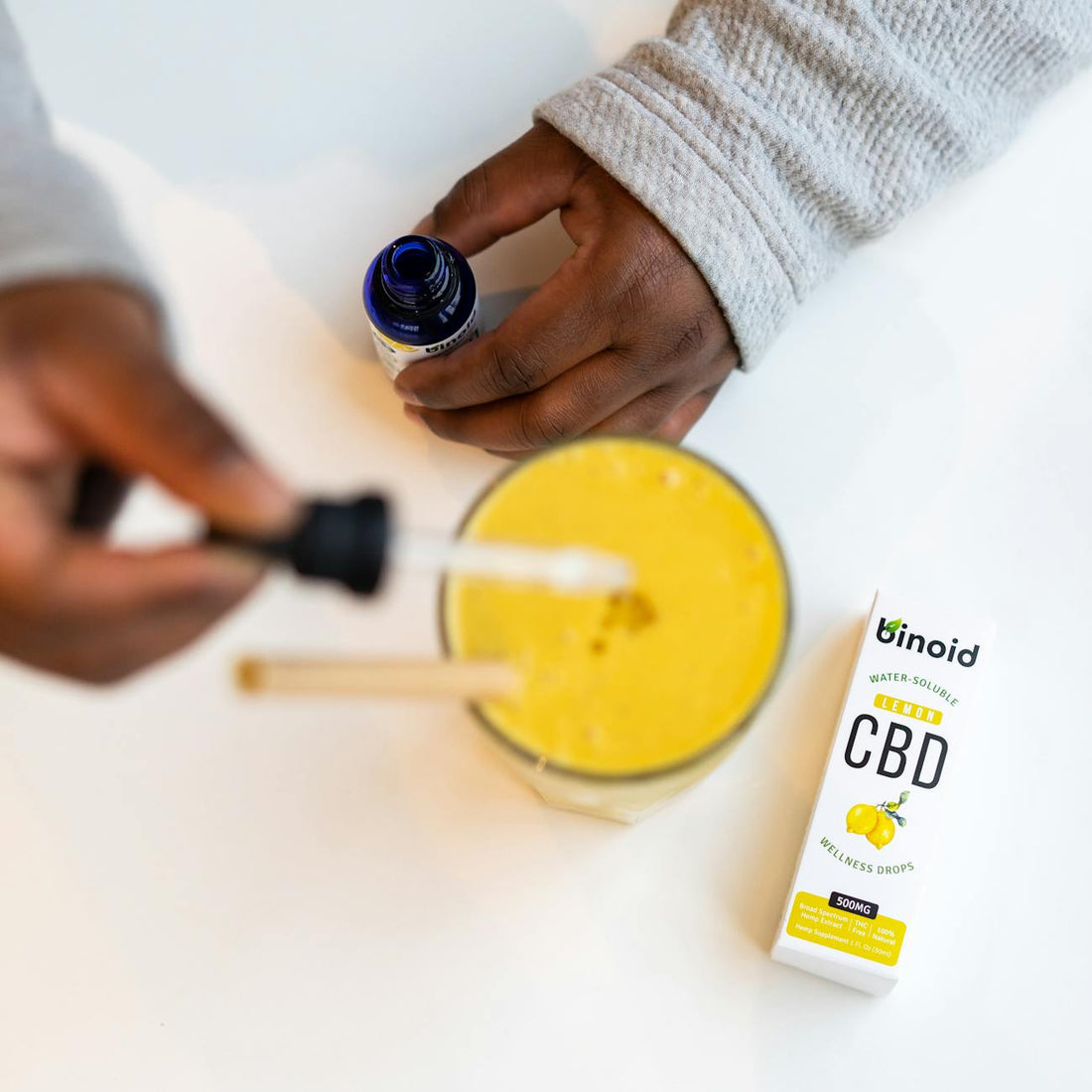If you’re curious about THC beverage enhancers, you’re not alone. As zero-proof culture grows, more people want a fast, microdose-friendly way to elevate seltzers, juices, and mocktails without alcohol. THC beverage enhancers promise exactly that—portable drops you can add to any drink for a measured lift with minimal calories and maximum style. This guide breaks down what to look for on the label, which ingredients signal quality, how to dose responsibly, and how to avoid common pitfalls so your first pour feels as good as it looks.

TL;DR: What to look for before you buy

- A clear cannabinoid panel per serving and per container, plus batch number.
- Third-party COA available via QR code or link, covering potency and contaminants.
- Sensible, microdose-friendly format (for example, 1 mg THC per dropper) with usage directions.
- Food-grade colorants and edible glitter declared by name; full ingredient list on-pack.
- State-compliant serving sizes and total THC per package.
- Honest claims and a brand you can actually reach if questions pop up.
First, what is a THC beverage enhancer?
Think of a THC beverage enhancer as concentrated, water-compatible cannabinoids in a tiny bottle—often formulated as a nanoemulsion so cannabinoids disperse in liquids without separating. Compared with traditional oil-based edibles, nanoemulsion systems can improve dispersion and absorption, which helps shorten the time to noticeable effects and smooth out variability. Peer-reviewed research on cannabinoid nanoformulations reports faster peak times and enhanced early exposure versus conventional oil formats, supporting why many modern drinkables “hit” sooner than classic edibles. See reviews and in vivo data on cannabinoid nanoemulsions for oral delivery for the science under the hood. PubMed review.
What that means practically: You can add a measured amount to a sparkling water, juice, tea, or mocktail, stir, and sip. You stay in control of dose, flavor, and vibe—perfect for the sober-curious set or anyone swapping a glass of wine for something lighter.
Safety and compliance: The label is your best friend
Beverage enhancers should make dosing easy, not mysterious. Before you buy, verify three things:
-
Serving size and total cannabinoids. Good packaging specifies THC per serving and total per container, plus other cannabinoids like CBG or CBD. If you’re in Minnesota, regulators cap hemp-derived THC at 5 mg per serving and 50 mg per package for edibles, with beverages limited to two servings per container. That consumer guidance is public and worth bookmarking for hosts and retailers. Minnesota Office of Cannabis Management.
-
A scannable Certificate of Analysis. Look for a QR code that opens a batch-level COA showing potency plus contaminant screens: heavy metals, pesticides, microbials, mycotoxins, and residual solvents. No COA, no purchase—simple.
-
Hemp compliance basics. Federally, “hemp” means cannabis and derivatives with no more than 0.3% delta‑9 THC by dry weight. That definition underpins how hemp-derived drinkables are regulated and labeled today. Congressional Research Service summary.
Ingredient checklist: What belongs—and what raises flags
A thoughtful enhancer lists ingredients you recognize and can look up. Here’s how to read the fine print like a pro.
-
Water-compatible cannabinoids. You’ll often see “water-soluble hemp-derived cannabinoids” or similar language indicating a nanoemulsion. That’s a green flag for mixability and more predictable onset compared with oil-in-water separation. For background on why nanoemulsions improve early absorption, see the cannabinoid nanoformulation literature cited above. PubMed review.
-
Edible glitter or pearlescent shimmer. Make sure it’s actually edible and listed by name on the ingredient panel—“mica-based pearlescent pigments,” iron oxides, and FD&C colorants are common in food applications. The FDA cautions consumers to distinguish truly edible glitters from decorations labeled only “non-toxic” or “for decorative use”; edible products must include an ingredient list. If it doesn’t, skip it. FDA consumer update on edible glitter.
-
Know where pearlescent pigments are permitted. FDA color-additive regulations allow mica-based pearlescent pigments in certain foods and non-alcoholic cocktail mixers (within specific limits), but not broadly across all beverages like everyday soft drinks. Brands should formulate and label to the intended use and level. If you want the regulatory text, this is the section to read. 21 CFR §73.350.
-
Preservatives and stability. Look for common beverage-friendly preservatives like sodium benzoate paired with citric acid to protect quality once opened. A brief storage note and a reasonable shelf-life are good signals the brand tested stability.
-
Potential allergens and sweeteners. Full disclosure is a must. If an enhancer adds flavor or sweetener, it should say so explicitly and list the source. If the enhancer is flavorless, the label should say that too.
-
Minimal mystery. Vague terms like “proprietary glitter blend” without an ingredient list are a no from us. Transparency builds trust.
Dosing that fits your life (and your glass)
Enhancers are popular because they make microdosing simple. Many buyers prefer a dropper that equals a predictable, low dose—something like 1 mg THC per dropper—so you can start low, wait, and adjust without overshooting. If you’re brand-new, try one measured serving, then give yourself 30–60 minutes before adding more. For a feel-based primer, our education piece on effects breaks down what many people notice at different dose levels and time windows. Read it before your first pour: How Do THC Drinks Make You Feel?
Hosting? Set out enhancer bottles with tent cards showing “per dropper” milligrams and simple house rules: start with one, wait half an hour, hydrate, and avoid stacking with alcohol. That keeps the vibe elevated and the experience mindful for everyone.
Quality signals you can verify in seconds
- QR-to-COA works and matches the batch code on your bottle.
- Potency values in the COA line up with the label within reasonable tolerances.
- COA includes full contaminant panels, not just cannabinoids.
- Ingredients on the website match the physical label.
- The brand’s educational content reflects how their products are made. If you’re curious about how enhancers and beverages come to life here, take a peek behind the scenes: From Concept to Cannatail.
{{IMAGE_1}}
Flavor, texture, and visual appeal
A great enhancer plays nice with whatever you’re drinking. Flavorless options let your base shine; lightly flavored options should declare the flavoring and not leave a film or aftertaste. For glitter-forward formats, the shimmer should suspend, not clump. If a product calls itself “edible glitter,” the brand should be clear about which food-grade pigments it uses and how to mix for best dispersion.
Pro tip: Sparkling waters with a tiny squeeze of citrus showcase shimmer beautifully, while cloudy juices and dairy-based drinks can obscure the swirl. Stir gently after adding your drops, then watch the cascade.
Use cases: When enhancers beat canned drinks
- Personalization. Some nights you want half a milligram; others, two. Drops let you tailor the moment.
- Zero-proof mixology. Keep your favorite mixers on hand and build sophisticated, alcohol-free cocktails—think citrus, bitters, fresh herbs, and bubbles.
- Hosting with range. Meet different tolerances without buying multiple can strengths.
- Pack light. A single bottle covers the whole weekend away.
If you’re looking for recipes that shine with enhancer drops, browse seasonal ideas across our blog and mocktail series. They’re designed for simple builds and maximum sparkle.
{{IMAGE_2}}
Try it the 23rd State way
We designed SHAKE to be as effortless as it is eye-catching. Each bottle contains hemp-derived cannabinoids in a water-compatible format and a food-grade shimmer that suspends beautifully in drinks. It’s flavorless, so your base beverage stays yours—just brighter. And the dosage is microdose-friendly per dropper so you can find your sweet spot calmly and confidently. Explore colors and ingredients on the product page: SHAKE Edible Glitter Drops. If you’d rather grab a ready-to-sip option, our full-flavor THC beverages—like the subtly decadent BLUSH CRUSH—offer balanced effects with refined flavor profiles and clear labeling.
{{IMAGE_3}}
Mini FAQ
-
How fast will I feel it? Water-compatible formats often feel faster than classic edibles. Research on cannabinoid nanoemulsions shows earlier peak exposure versus conventional oil carriers, which tracks with many people’s “15–30 minute” experience. Your mileage may vary based on stomach contents and individual metabolism. For the science backdrop, see the nanoformulation review cited above. PubMed review.
-
Is edible glitter really edible? Yes—when it’s made with approved food color additives and listed on the label. The FDA advises consumers to verify ingredient lists; avoid decorations labeled only “non-toxic” or “for decorative use.” FDA edible glitter guidance.
-
What’s legal where I live? Laws vary by state. In Minnesota, hemp-derived products sold to adults 21+ must meet serving and package limits for THC in edibles and beverages; get the current consumer overview here. Minnesota Office of Cannabis Management.

- Any quick red flags? No COA, missing ingredient list, unrealistic claims, or dosing instructions that don’t match the dropper size.
The bottom line
THC beverage enhancers can be a low-friction, high-style way to enjoy cannabis—especially if you value control, discretion, and design. Read labels closely, insist on batch COAs, and favor transparent ingredient panels that call their glitter and colorants by name. When in doubt, buy from brands that educate openly and make it easy to sip responsibly. If you’re ready to bring that energy home, start with SHAKE and keep a couple of chilled mixers on deck. Your glass, your dose, your vibe.

